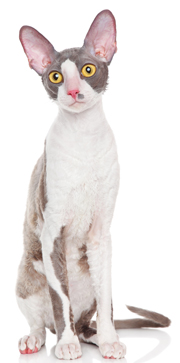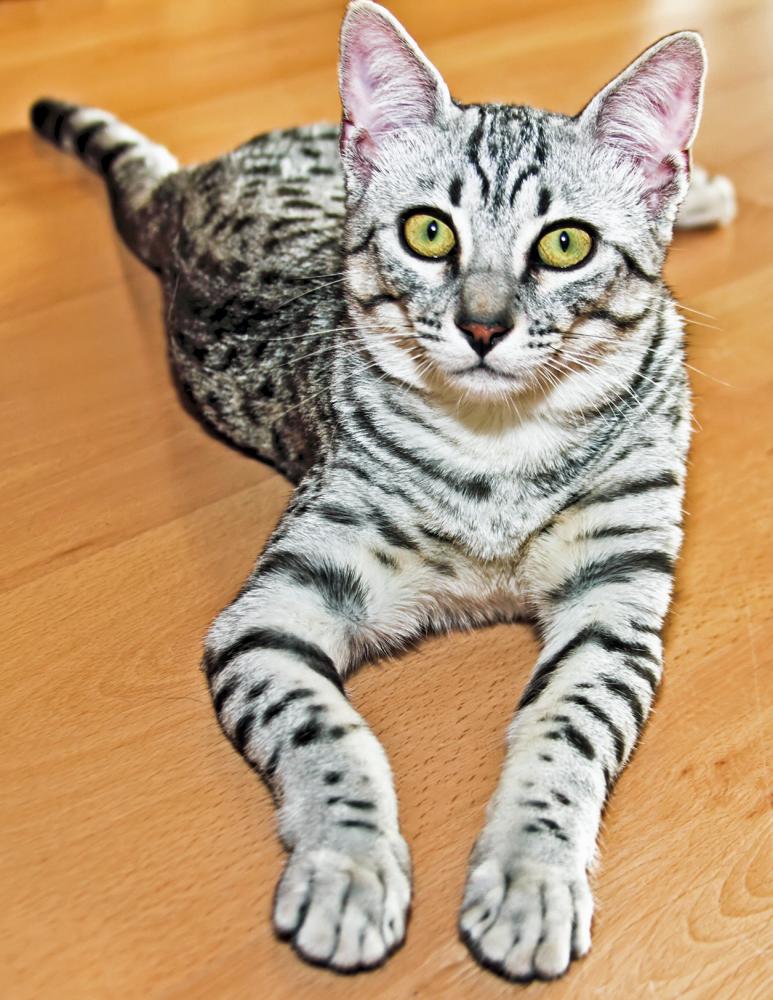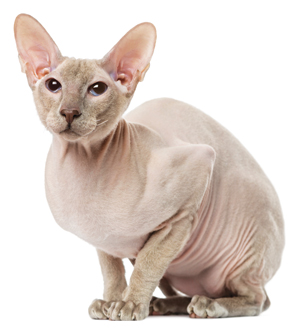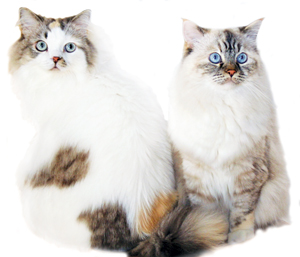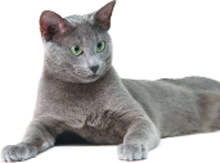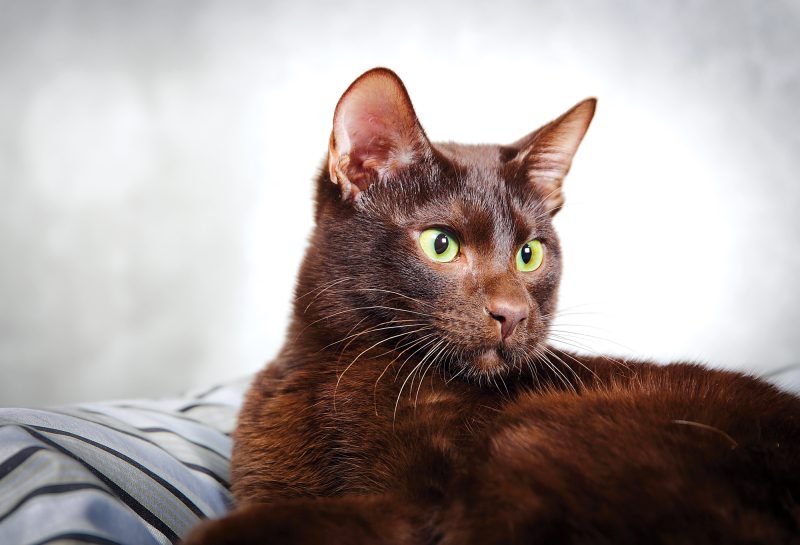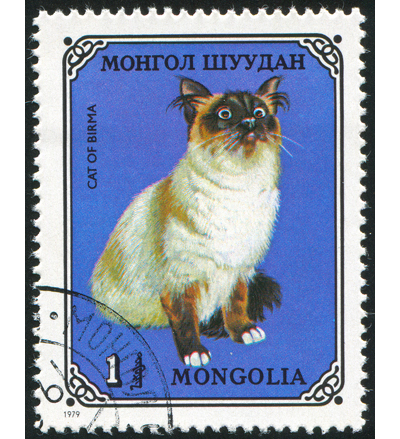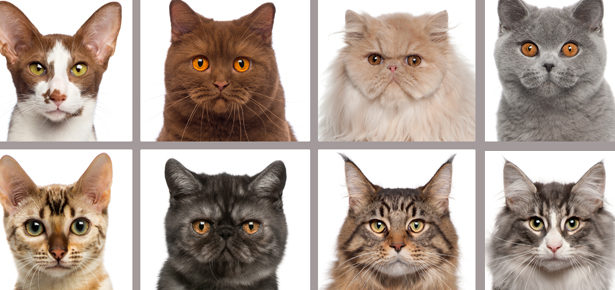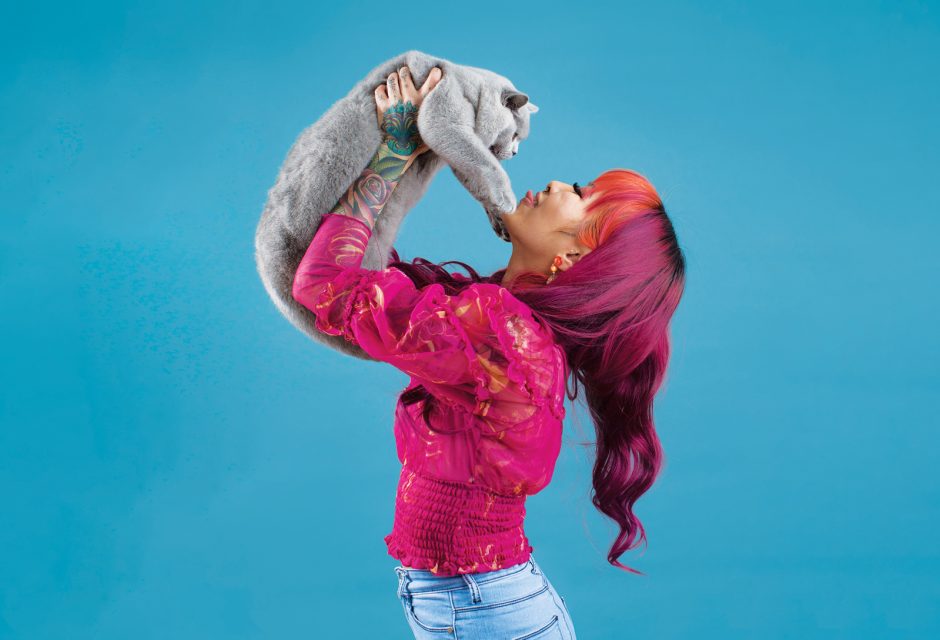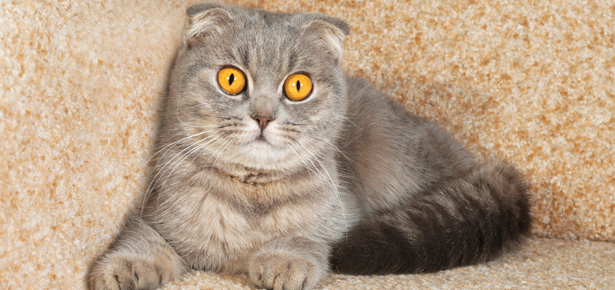

Uncommonly Unique Cat Breeds
Get to know these special cats
Scottish Fold (image above)
This unique cat owes his heritage to a barn cat named Susie, who was born in the early 1960s with ears that folded downward, caused by a genetic mutation that affects cartilage. These cats are often referred to as owl-like as the result of this unique feature. Unique looking and notoriously affectionate, Scottish Folds come in both long- and shorthaired varieties and any coat colour or combination of colours.
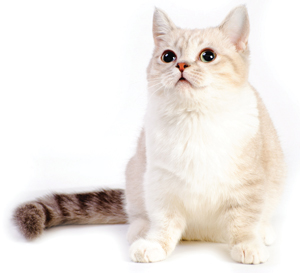
This breed, developed in the 1980s by a music teacher from Louisiana, is defined by its extremely short legs, a trait owing to a genetic mutation. Although critics have expressed concern over potential mobility issues, Munchkin fanciers claim the shortness of the breed’s legs doesn’t impede its running and jumping skills—perhaps partially due to the slightly higher hind legs, which come in handy for feline acrobatics. This is a small to medium sized breed that comes in both shorthaired and longhaired varieties.
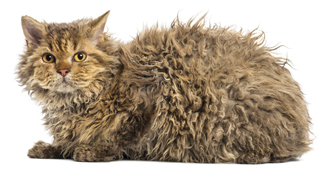
This large, heavy-boned cat originated in Montana in the 1980s, where one kitten in a stray’s litter had an unusual, curly coat. That cat was bred to a Persian and through the years type and temperament were established. The Selkirk Rex’s curly coat is soft, wooly, and loosely curled—the latter being a trait that is more evident on the longhaired variety. His head is round as are his large eyes. Another hallmark of the breed is his distinct muzzle, whose length is equal to half of its width.

Known as the Skogkatt in his native Norway, this large, semi-longhaired cat looks similar to the Maine Coon but his large almond-shaped eyes and wedge-shaped head are clear distinctions. Records don’t exist to confirm it, but speculation is the Vikings brought these cats to Norway. Today’s Norwegian Forest Cat has adapted to its cold native climate, with a double coat that is warm and water resistant. He’s also an expert climber with extremely strong claws.
Cornish Rex
Originally from Cornwall, England in the 1950s, the Cornish Rex’s Whippet-like body and distinctive curly coat make him one of the most unique-looking cats. His egg-shaped head features high cheekbones and prominent ears that seem always on alert. His coat lies close to the body and is soft to the touch—some claim the softest in the cat kingdom. Though he looks delicate, the Cornish Rex is actually quite hardy and athletic—keen to play, race, and perform amazing acrobatic jumps around the home.
Bengal
In the 1960s, the Bengal was developed as a hybrid between Asian Leopard Cats and a variety of domestic cats. With his spots, rosettes, and white belly, it’s no wonder people often refer to Bengals as the little leopards of the cat world. This medium-sized breed’s coat is its hallmark and comes in marble and spotted patterns as well as a variety of shades.
Egyptian Mau
With his stunning good looks, it’s no wonder the Egyptian Mau was worshipped by pharaohs and kings. This small to medium-sized breed features a striking spotted coat pattern. He’s quite an athlete, too, possessing a Cheetah-like gait and better-than-average agility—the latter of which is due in large part to the fact that his hind legs are longer than his front legs. A unique flap of skin that extends from his flank to the back knee gives him even greater stride. These cats are chatterboxes, known for making a comical array of chortles and chirps.
Peterbald
This breed originated in Russia in the 1990s, the result of a mating between a hairless cat and an Oriental Shorthair. Over time, the breed was developed to introduce Siamese type, which is evident in the long, narrow head, almond-shaped eyes, and alert ears that are set widely apart. The Peterbald’s tail is quite long, and his webbed feet have earned him a reputation as a break-in artist—the Peterbald is known to grasp objects and even open doors with those paws.
Ragamuffin
This teddy bear-like cat was developed in California in the 1990s from the Cherubim breed, which itself evolved from matings with various strays in the 1960s. The Ragamuffin is medium to large in size and his soft coat comes in all colours and patterns. A trademark aspect of this cat is that he doesn’t mind being picked up and in fact is quite likely to go limp in your arms when you do so.

For the origins of this unique cat, look no further than 1980s California, where a fancier bred a stray longhaired cat that had unusual ears. Today, the breed’s most unique characteristic is still its ears, which are almost lynx-like with their feature long tufts of hair arcing backward. Add to this the Curl’s glorious plumed tail and you have a true show-stopper of a cat. Known as a quiet breed, the Curl doesn’t talk a lot, and when he does it’ll likely be more of a soft coo than an attention-seeking meow.
Russian Blue
Although records of exact origins don’t exist, this breed emerged from the Archangel Isles of northern Russia—an environment where his dense, plush coat no doubt came in very handy. This shorthaired cat has a blue-gray coat and most typically has green eyes. He’s known as a relatively quiet cat who warms up quickly to people.
Join the newsletter and never miss out on cat content again!
"*" indicates required fields
By clicking the arrow, you agree to our web Terms of Use and Privacy & Cookie Policy. Easy unsubscribe links are provided in every email.





